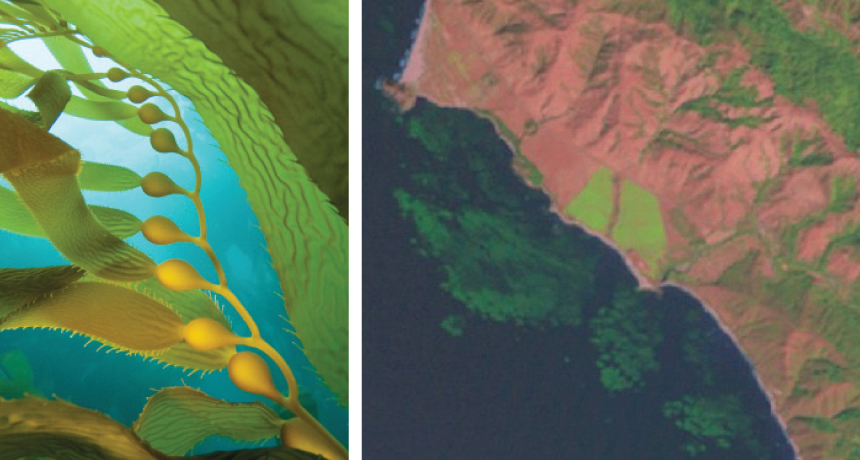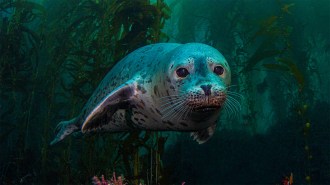Help scientists find floating forests of kelp
A citizen-science project needs people to spot seaweed from space images

Beds of kelp (left) are dense enough to be seen from space. The green smear off Carmel, Calif., in the satellite image (right) is what Floating Forests volunteers look for.
NatalieJean/Shutterstock; www.floatingforests.org






